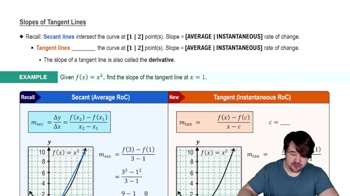A line perpendicular to another line or to a tangent line is often called a normal line. Find an equation of the line perpendicular to the line that is tangent to the following curves at the given point P.
y = 2/x; P(1, 2)
 Verified step by step guidance
Verified step by step guidance Verified video answer for a similar problem:
Verified video answer for a similar problem:



 5:13m
5:13mMaster Slopes of Tangent Lines with a bite sized video explanation from Patrick
Start learning